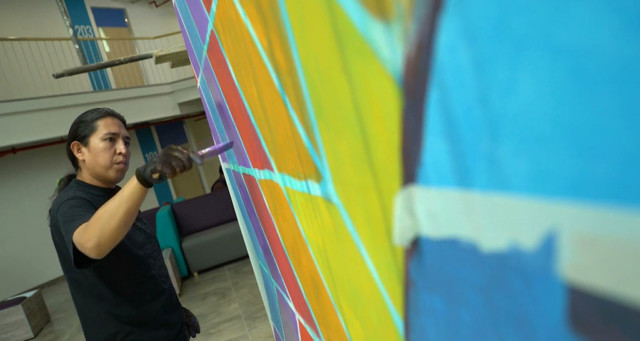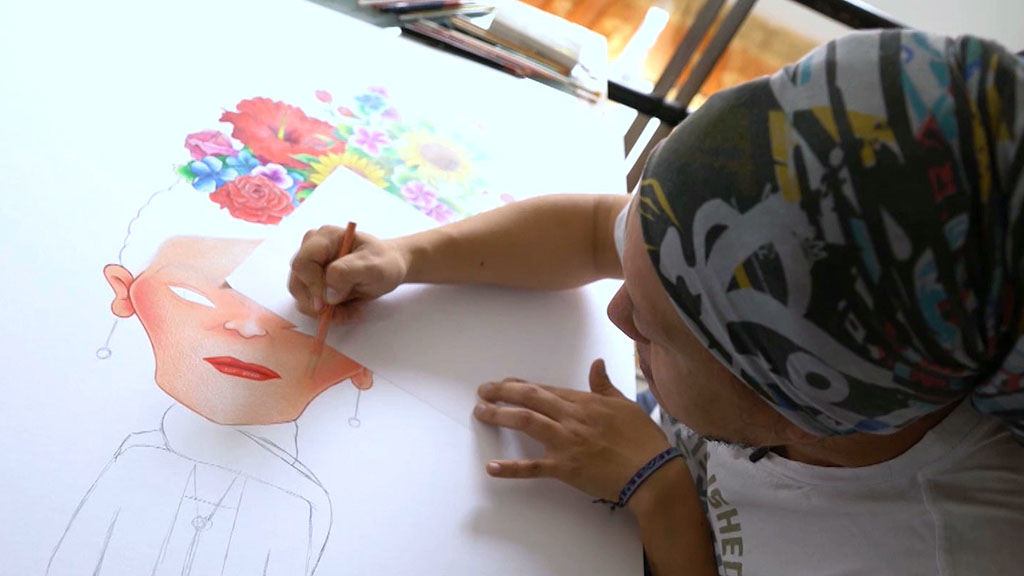More than 50 years of armed conflict is over in Colombia, so what’s next for its citizens and the challenges they face? The answer may be found with artists and the cultural richness of their work.
In our continuing series, CGTN’s Michelle Begue looks at the message behind the work of the graffiti muralist known as Guache.
In the bustling city of Bogota, colorful shapes bring visual relief to the concrete and brick landscape. Some people simply label it graffiti, while others see a beautiful mural of colors. For those who stare long enough, however, they will see a deeper sociopolitical message.
“In Latin America, we have a strong history with muralism,” according to Oscar Gonzalez, an artist known as Guahce, which means ‘warrior’ in the language of the indigenous Muisca. “Muralism has not only been an important visual school, but also a way to reflect social thoughts. So that marked me and influenced me in my work as a muralist.”
For more than a decade, Guache’s urban masterpieces have appeared on the streets of South America and Europe. His art is inspired by indigenous ancestral images and fused with contemporary designs.
“To honor and re-vindicate the thoughts, way of living, and symbols of our ancestors. Also the way they construct relationship, that is why I have those symbols in my recent series.”
The heritage of the Americas can be seen in the stroke technique of Guache’s latest work, called ‘the Eagle and the Andean Condor.’ The mural’s home will be the entrance to the Colombian American Cultural, which is celebrating its 75th anniversary.
“It is basically the encounter of two cultures; the culture of the South and North America, through the perspective of ancestral traditions and through the portraits of women.”
While Bogota’s urban art scene has been growing in international recognition, there has also been a movement to stop it.
In neighborhoods like La Candelaria – known for its 16th century buildings- urban art has covered its walls for years. But the new city administration wants to return to a more historic look and their original white color.Officials have chosen to paint over murals, much to the dismay of artists, tourists and residents who live here.
Guache believes graffiti has just as much historical and cultural value as the old buildings they adorn.
“Graffiti is a genuine and visceral expression of what it’s like to live in this city, Bogota, for example. A city which is filled with inequality and that represents what we are.”
Just like the indigenous characters represented in Guache’s work, this street art continues to fight for its existence.
More of Michelle Begue’s “Arts & Conflict”
Artist known as ‘Bacteria’ shines light on corruption infecting Colombia
Colombian musician’s “escopetarra” gives new life to weapons
 CGTN America
CGTN America


